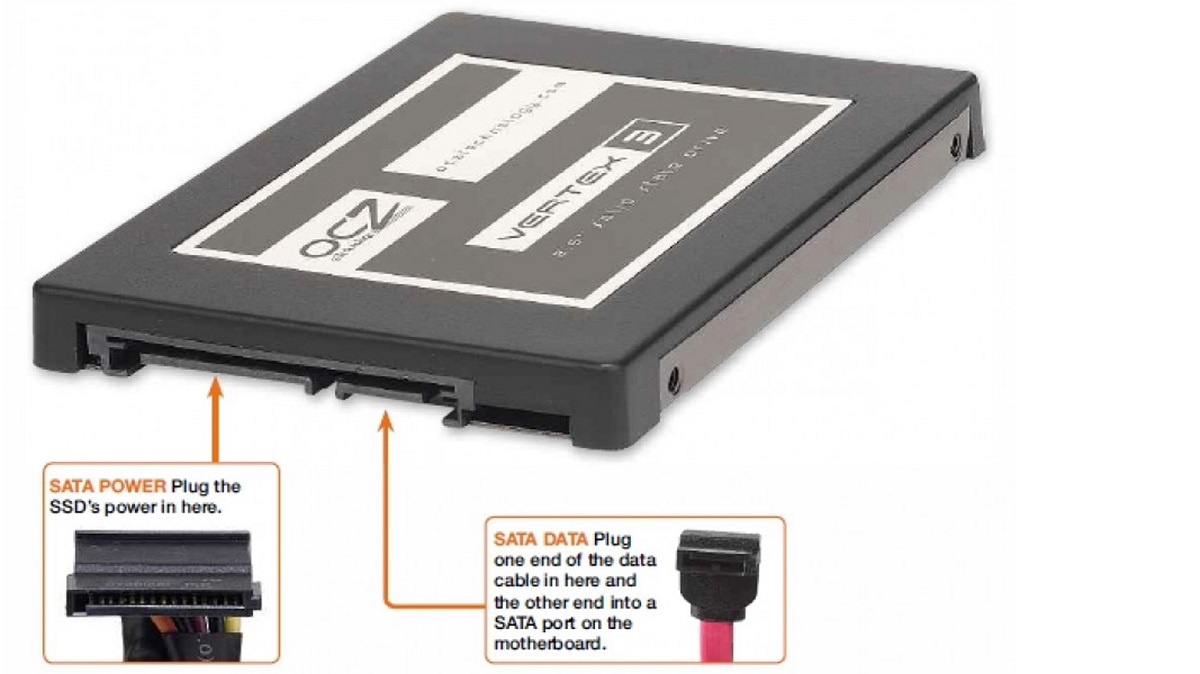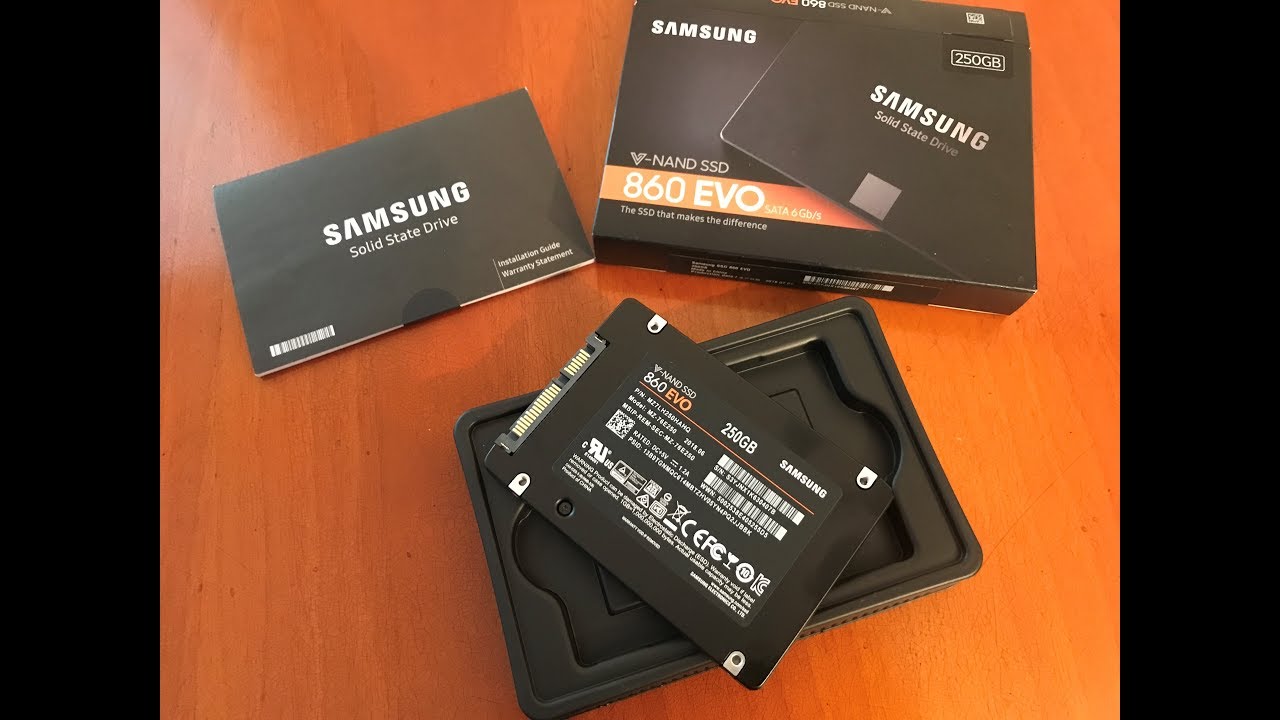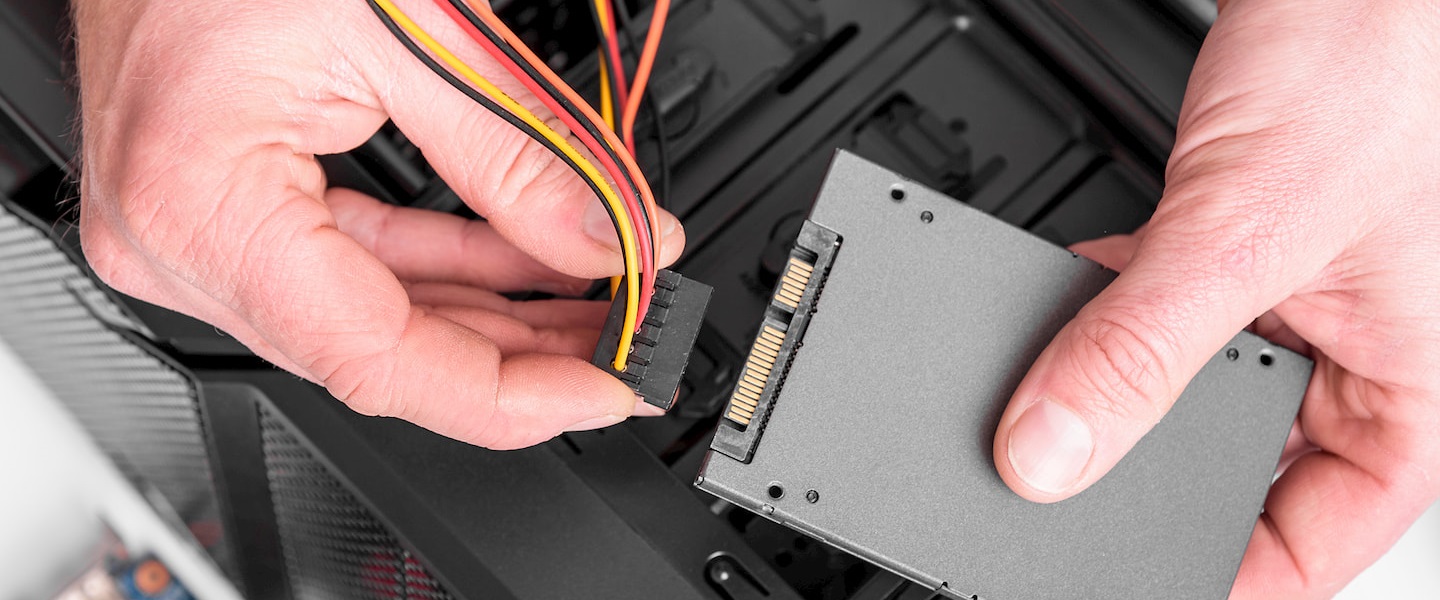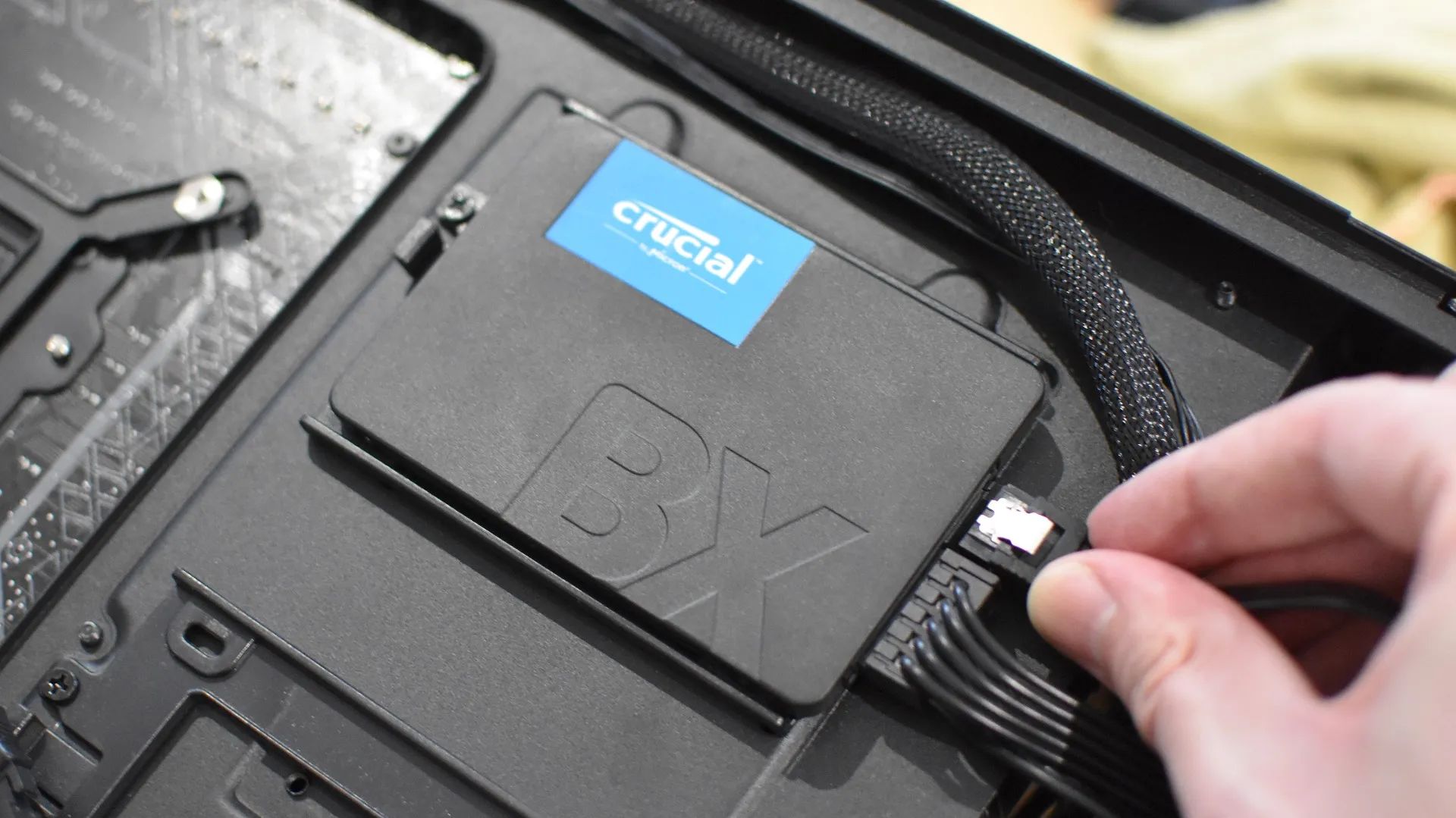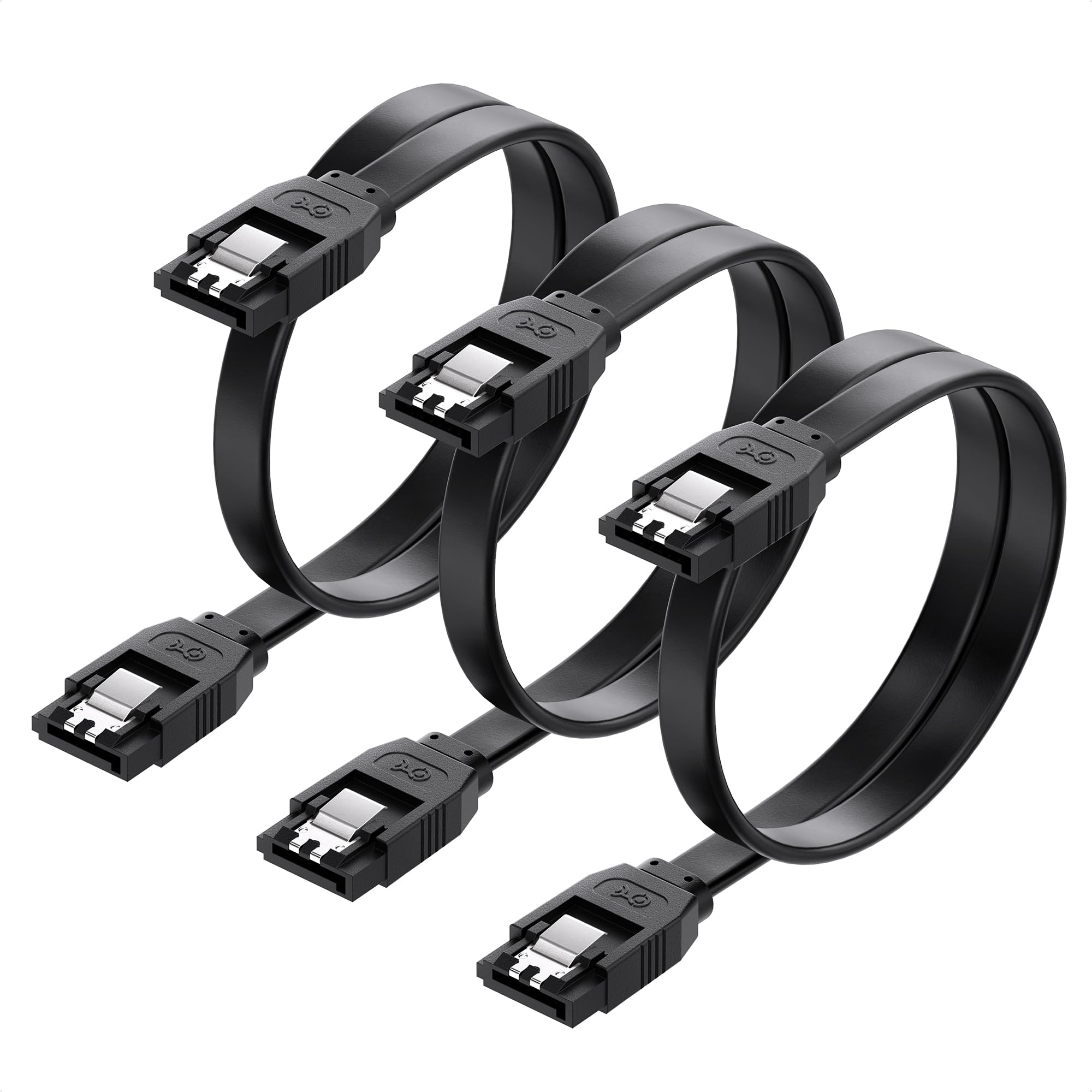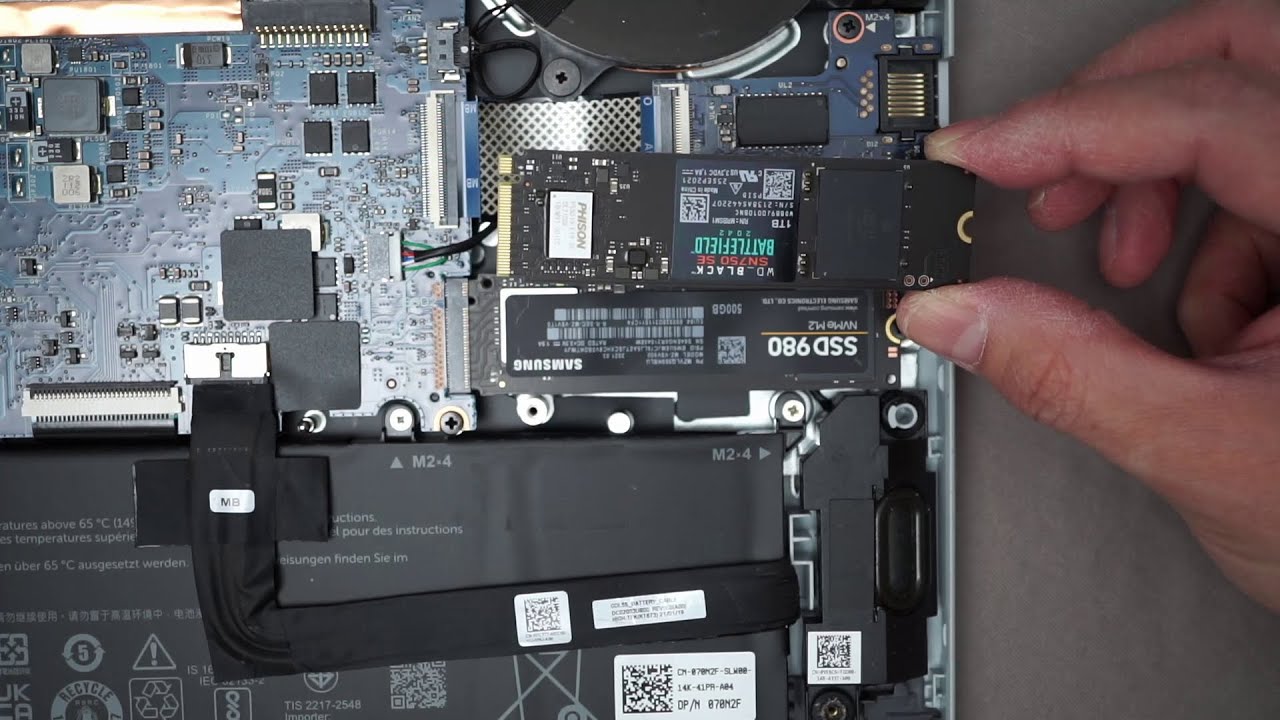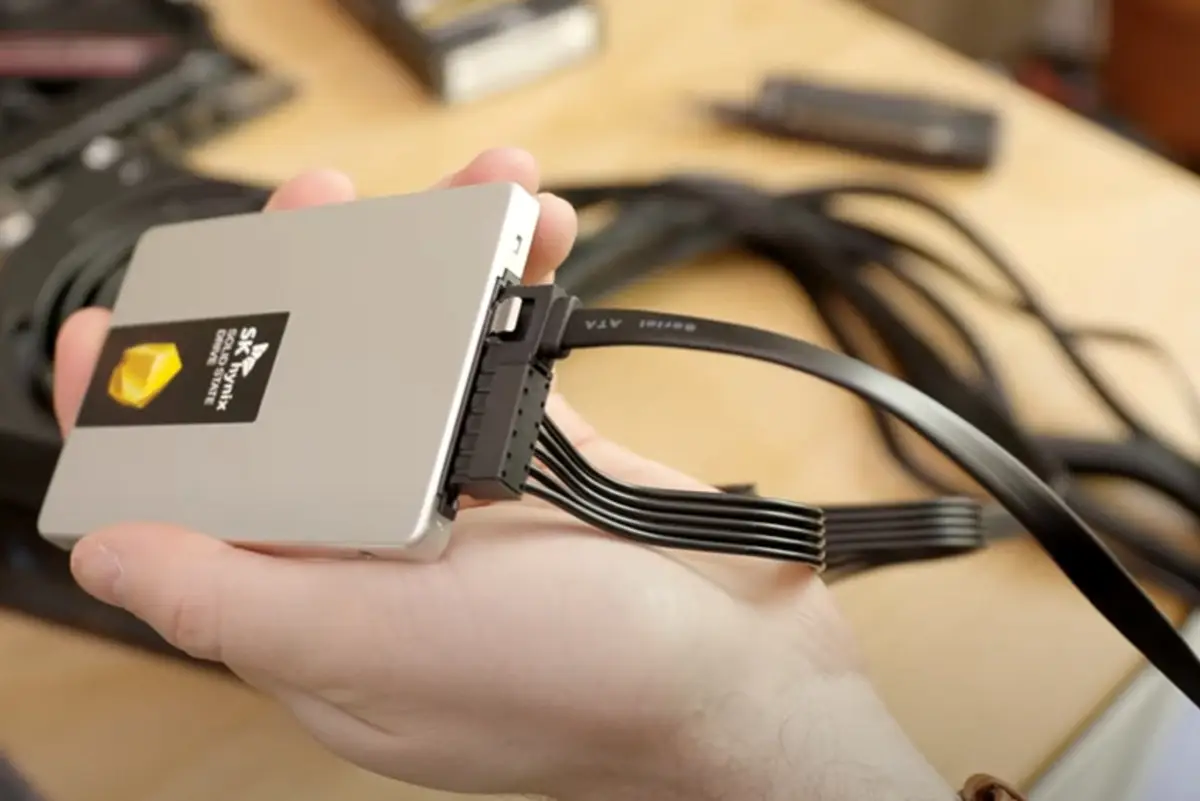Introduction
Welcome to our guide on the various cables you need for SSDs. As solid-state drives (SSDs) continue to gain popularity for their speed and performance, it’s essential to understand the different types of cables required to connect and power these devices. Whether you’re building a new computer system or upgrading an existing one, having the right cables is crucial for a smooth and efficient SSD setup.
SSDs offer significant advantages over traditional hard disk drives (HDDs). They utilize flash memory technology, resulting in faster read and write speeds, improved reliability, and reduced power consumption. However, to fully enjoy these benefits, you need the appropriate cables to connect your SSD to your motherboard or external device. Depending on the SSD interface and your system’s specifications, you may need different types of cables, each serving a specific purpose.
In this guide, we will explore the various types of cables commonly used with SSDs. We will cover SATA cables for traditional SSDs, SATA power cables for providing power to the SSD, USB cables for portable SSDs, Thunderbolt cables for high-speed connection options, M.2 cables for the M.2 form factor, and NVMe cables for NVMe SSDs.
Understanding these cables and their functions will help you make informed decisions when it comes to selecting the right cables for your SSD setup. So, let’s dive in and explore the different types of cables you need for SSDs.
SATA Cables
SATA (Serial ATA) cables are widely used for connecting SSDs to motherboards or other devices. They provide a reliable data transfer interface that supports high-speed communication between the SSD and the computer system. SATA cables have become the standard for traditional SSDs and are available in different variations.
These cables typically consist of two connectors: one for the SSD and the other for the motherboard or SATA controller. The connectors are designed to fit securely and ensure a stable connection. SATA cables also come in different lengths, ranging from 6 inches to 3 feet, allowing flexibility in the placement of SSDs within your system.
One notable variation of SATA cables is the SATA III cable, which supports data transfer speeds of up to 6 Gbps. This high-speed capability is ideal for maximizing the performance of modern SSDs. However, it’s important to note that using a SATA II cable with a SATA III SSD will limit the data transfer speed to 3 Gbps. Therefore, to fully leverage the potential of your fast SSD, it’s recommended to use a SATA III cable if your system supports it.
Another consideration when using SATA cables is the presence of angled connectors. These connectors are designed to ensure a better fit in tight spaces or when connecting multiple SSDs in a limited area. Angled SATA cables provide added flexibility in cable management and can help keep your system neat and organized.
In summary, SATA cables are the standard choice for connecting traditional SSDs to motherboards or SATA controllers. They offer reliable and high-speed data transfer capabilities, with SATA III cables providing the fastest speeds. When selecting SATA cables for your SSD setup, consider factors such as the cable length, presence of angled connectors, and compatibility with your system’s SATA interface. By choosing the appropriate SATA cables, you can ensure optimal performance and stability for your SSDs.
SATA Power Cables
In addition to the SATA data cables, SATA power cables are essential for providing power to your SSD. These cables connect from your power supply unit (PSU) to the SSD, ensuring it receives the necessary voltage and current.
SATA power cables are designed with a keying system that prevents incorrect insertion, ensuring a secure connection. They feature a narrow connector with several pins, which make it compatible with various types of drives, including SSDs.
One of the advantages of SATA power cables is their versatility. They can power multiple devices at once, including SSDs, hard drives, and optical drives, thanks to their daisy-chain capability. This means you can connect multiple SSDs to a single SATA power cable, reducing cable clutter and simplifying cable management within your system.
When selecting SATA power cables for your SSD, it’s crucial to consider the power requirements of your specific SSD model. SSDs generally have lower power consumption compared to traditional hard drives, making them more energy-efficient. However, it’s still important to ensure that your power supply can deliver sufficient power to all connected SSDs and other components in your system.
Additionally, it’s advisable to use high-quality and well-insulated SATA power cables to prevent any power fluctuations or electrical issues. This ensures a stable power supply, which is crucial for the proper functioning and longevity of your SSD.
In summary, SATA power cables are necessary for delivering power to your SSDs. They offer compatibility with various drive types, daisy-chain capabilities, and versatility in cable management. When selecting SATA power cables, consider the power requirements of your SSD and ensure that your power supply can handle the load. By using reliable SATA power cables, you can provide a stable power supply to your SSDs, ensuring smooth operation and minimizing the risk of electrical issues.
USB Cables
USB (Universal Serial Bus) cables are commonly used to connect external SSDs to computers and other devices. They provide a convenient and versatile solution for connecting portable SSDs, allowing for easy data transfer and backup on the go.
USB cables come in different variations, with USB 2.0, USB 3.0, and USB 3.1 being the most common. These different versions determine the data transfer speeds supported by the cable. USB 3.0 and USB 3.1 cables offer significantly faster data transfer compared to USB 2.0, making them ideal for SSDs that require higher bandwidth.
It’s important to ensure that the USB cable you choose is compatible with your SSD and the USB port on your computer or device. USB Type-A and USB Type-C are the most commonly used connectors. USB Type-A is the traditional rectangular-shaped connector, while USB Type-C is a reversible connector that offers faster speeds and versatile connectivity options.
When selecting a USB cable for your SSD, consider the length based on your specific needs. Longer cables provide flexibility in positioning your external SSD, but keep in mind that longer cables may experience signal degradation over longer distances.
Another consideration is the durability and quality of the USB cable. Look for cables with good insulation and sturdy connectors to minimize the risk of signal loss or physical damage. Additionally, some USB cables come with features like braided shielding or reinforced connectors for added durability and longevity.
In summary, USB cables are widely used for connecting portable SSDs to computers and devices. They offer convenience, versatility, and various options for data transfer speeds and connector types. When selecting a USB cable for your SSD, consider compatibility, data transfer speeds, cable length, and durability. By choosing the right USB cable, you can ensure efficient and reliable connectivity between your external SSD and your computer or device.
Thunderbolt Cables
Thunderbolt cables are a high-speed connectivity option for SSDs and other devices that require fast data transfer. Thunderbolt technology was developed by Intel and offers lightning-fast speeds, making it ideal for users who require high-performance external SSDs.
Thunderbolt cables come in different versions, with Thunderbolt 2 and Thunderbolt 3 being the most common. Thunderbolt 2 cables feature a Mini DisplayPort connector and support data transfer speeds of up to 20 Gbps. On the other hand, Thunderbolt 3 cables use a USB Type-C connector and offer even faster speeds, reaching up to 40 Gbps.
One of the key advantages of Thunderbolt cables is their versatility. Thunderbolt ports are often found on Mac computers and high-end Windows devices, and they support a range of peripherals, including SSDs, monitors, external hard drives, and more. This versatility allows users to connect multiple devices and create a powerful workstation setup.
When selecting Thunderbolt cables, it’s important to consider the compatibility of the cable and the devices you are connecting. For example, Thunderbolt 2 cables are not compatible with Thunderbolt 3 ports and vice versa. Therefore, ensure that the cable you choose matches the interface on your SSD and the port on your computer or device.
Furthermore, Thunderbolt cables support daisy-chaining, which means you can connect multiple Thunderbolt devices together in a single chain. This eliminates the need for additional ports and reduces cable clutter. However, it’s important to ensure that the devices in the chain support daisy-chaining and that the total bandwidth requirements are within the limits of the Thunderbolt connection.
In summary, Thunderbolt cables offer lightning-fast data transfer speeds and excellent versatility for connecting external SSDs and other peripherals. When selecting Thunderbolt cables, consider the version, compatibility with your devices, and the potential for daisy-chaining. By choosing the right Thunderbolt cable, you can unlock the full potential of your high-performance SSD and create a streamlined and powerful workstation setup.
M.2 Cables
M.2 cables, also known as Next Generation Form Factor (NGFF) cables, are specifically designed for M.2 SSDs. M.2 is a compact form factor commonly used in modern laptops and desktop motherboards. These cables provide the necessary connectivity to enable the high-speed data transfer and storage capabilities of M.2 SSDs.
M.2 cables are typically built into the motherboard or the M.2 adapter card. They feature a small, slim, and flexible design, allowing for easy installation in tight spaces. The cable connects the M.2 socket on the motherboard or adapter card to the M.2 SSD, providing both data transfer and power transmission.
One of the advantages of M.2 cables is their versatility in supporting different storage technologies. M.2 cables can accommodate various interfaces, including SATA, PCIe (PCI Express), and NVMe (Non-Volatile Memory Express). This flexibility allows users to connect different types of M.2 SSDs, depending on their specific needs and system requirements.
When selecting M.2 cables, it’s important to consider the keying type. M.2 sockets and SSDs have different key notches to prevent the wrong alignment. The most common key variations are B key, M key, and B+M key. It’s crucial to ensure that the cable you choose matches the keying type of both the M.2 socket and the SSD to establish a proper connection.
Another consideration is the maximum data transfer speed supported by the M.2 cable. Since M.2 SSDs can support different interfaces, it’s important to use a cable that matches the capabilities of the SSD. For example, if you have an NVMe M.2 SSD that supports high-speed data transfer, it’s recommended to use an M.2 cable that can handle the increased bandwidth to fully utilize the SSD’s performance.
In summary, M.2 cables are specifically designed for connecting M.2 SSDs to the motherboard or adapter card. They provide both data transfer and power transmission capabilities. When selecting M.2 cables, consider the keying type and the maximum data transfer speed supported by the cable to ensure proper compatibility with your M.2 SSD and system. By choosing the right M.2 cable, you can take full advantage of the high-speed storage capabilities offered by M.2 SSDs.
NVMe Cables
NVMe (Non-Volatile Memory Express) cables are specifically designed for NVMe SSDs, which offer incredibly fast data transfer speeds and low latency. These cables enable the high-speed communication between the NVMe SSD and the computer system, ensuring optimal performance and efficiency.
NVMe cables use the PCIe (PCI Express) interface, which provides faster data transfer speeds compared to traditional SATA interfaces. PCIe allows for high-bandwidth communication between the NVMe SSD and the motherboard, resulting in lightning-fast data transfer rates that can greatly enhance system performance.
When selecting NVMe cables, it’s important to choose cables that are compatible with the specific PCIe generation supported by your NVMe SSD and motherboard. PCIe cables come in different generations, such as PCIe 3.0 and PCIe 4.0, with each generation offering faster speeds and improved bandwidth. Ensure that your NVMe cable matches the supported PCIe generation to fully leverage the performance capabilities of your NVMe SSD.
Another consideration is the length of the NVMe cable. It’s important to select a cable that is long enough to reach from the NVMe SSD slot on the motherboard to the NVMe SSD itself, while also taking into account cable management and space constraints. Keep in mind that longer cables may introduce signal degradation, so it’s recommended to keep the cable as short as possible without compromising the overall system setup.
It’s crucial to use high-quality and shielded NVMe cables to maintain signal integrity and minimize the risk of signal loss or interference. NVMe cables with proper shielding help reduce electromagnetic interference, ensuring stable and reliable data transfer between the SSD and the system.
In summary, NVMe cables are designed to support the high-speed data transfer capabilities of NVMe SSDs. When selecting NVMe cables, consider the compatibility with the supported PCIe generation, the length of the cable, and the quality of the shielding. By choosing the right NVMe cable, you can ensure efficient and reliable communication between your NVMe SSD and your computer system, unlocking the full potential of NVMe technology.
Conclusion
In this guide, we have explored the different types of cables you need for SSDs. Understanding the various cables and their functions is crucial for connecting and powering your SSDs effectively, whether you are building a new computer system or upgrading an existing one.
SATA cables are the standard choice for connecting traditional SSDs to motherboards or SATA controllers, offering reliable data transfer capabilities. SATA power cables are necessary for providing power to your SSDs, ensuring a stable power supply for optimal performance.
If you have a portable SSD, USB cables provide convenience and versatility for connecting your device to computers and other devices. Thunderbolt cables offer lightning-fast data transfer speeds and versatility for high-performance external SSDs and other peripherals.
M.2 cables are specifically designed for M.2 SSDs, offering flexibility and compatibility with different storage technologies. NVMe cables, on the other hand, are designed for NVMe SSDs and provide high-speed communication through the PCIe interface.
When selecting cables for your SSD setup, consider factors such as compatibility, data transfer speeds, cable length, and cable quality. Choosing the right cables ensures efficient data transfer, reliable power transmission, and overall system stability.
Now that you are equipped with the knowledge of the different cables needed for SSDs, you can confidently select the appropriate cables for your specific SSD setup. By utilizing the right cables, you can maximize the performance and reliability of your SSDs, ensuring a seamless computing experience.







